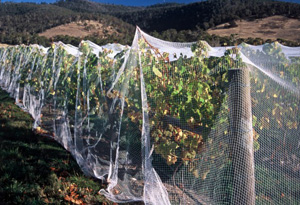
Didn’t Know There Were High and Low Blueberries?
Lowbush blueberries only grow 12 – 24 inches high, and can be used for ornamental planting or as a low shrub. They can also be planted in containers for easy care and harvest. They spread through underground runners or rhizomes. Plant bushes at least 12 inches apart so they have plenty of sun and air circulation to ward off molds and mildews.
Most highbush varieties grow around 6 feet tall; Saskatoons grow to 20 feet tall, and on rare occasions can reach nearly 30 feet tall. Most blueberry breeding has focused on highbush varieties, giving you more choices. Plant highbush varieties at least 4 feet apart, and Saskatoons at least 12 feet apart.
All blueberries need full sun and sandy, well-drained, acidic soil, with a ph between 4.0 and 5.0. Young plants and newly transplanted bushes need a high amount of organic matter so they can adjust and mature. Make sure to dig in compost, well-rotted manure, and other organic material rich in nitrogen. If your soil has a lot of clay, make sure to add plenty of sand to provide drainage. If your soil isn’t acidic, even after adding compost and other amendments, you can sprinkle sulfur around the bushes in the spring and fall to help modify the ph. A top dressing of mulch made of wood chips, sawdust, or chopped oak leaves will help retain moisture and add to the acidity of the soil.
Varieties for the North
The USDA has produced a valuable tool called a plant hardiness zone. Some maps even have a place where you can type in your zip code to find out exactly what zone you live in. This is important, as northern varieties of blueberries need a cold winter to thrive, while southern varieties need a mild winter. Generally, northern lowbush blueberries can grow and thrive in zones 2-7. Northern highbush varieties grow in zones 3-7. These blueberries should grow just about anywhere from Canada down to the northern parts of Texas, Mississippi, Alabama, and Georgia. They’ll also grow in the higher elevations of California, where there is frost and snow. However, they won’t do well along the coast of California, Oregon, or Washington, or anyplace further south than the areas already mentioned.
Saskatoons are a highbush variety that is so cold hardy, it can survive temperatures down to 60 degrees below zero. They’re also the only blueberry that prefers a more neutral soil, with a ph of 6.0 to 7.0. If you live in a northern area and have a lot of lime in your soil, these may be your best choice.
Bird Netting for Blueberries
 Bird netting may be the only way to
Bird netting may be the only way tokeep hungry birds off your delicious ripening fruit.
Image from Wikimedia.
Finely woven tulle netting is lightweight and durable. It will keep the birds from eating the berries while allowing air circulation so that the plants have less chance of getting mold or mildew. To be effective, netting has to cover the entire plant and be anchored into the ground in such a way that birds cannot get under the netting and become trapped. Plastic or nylon netting can also be used, provided it’s lightweight, and allows air circulation while preventing birds from getting to the berries.
Netting can be draped over each individual plant, or a frame can be made to enclose a number of plants, and the netting draped over the entire area. Always anchor the netting to the ground to prevent birds from getting under it.
Varieties for the South
Rabbiteye blueberries and southern highbush varieties all grow well in zones 6 – 10, meaning they’ll grow in the deep south, and as far north as Ohio. Check with a USDA plant hardiness zone map to ensure you know your zone before purchasing blueberry plants.
Rabbiteyes are native to the south and don’t require chilling to set fruit. Like all blueberries, they prefer well-drained, sandy soil with a low pH. Plant Rabbiteye bushes at least 6 feet apart. Horticulturalists bred Rabbiteyes with northern highbush plants to produce southern highbush plants, which need to be planted at least 4 feet apart.
Blueberries aren’t difficult to grow, and once established can give you a sweet crop for decades. Why not try a few varieties?
 Lowbush blueberry plants usually grow no higher than your knees. And some species stay very low to the ground. Image by L. Enking via Flickr.
Lowbush blueberry plants usually grow no higher than your knees. And some species stay very low to the ground. Image by L. Enking via Flickr.